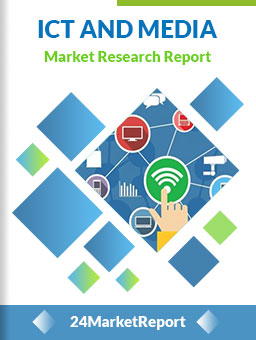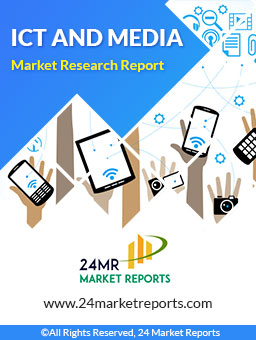
Download FREE Report Sample
Download Free sampleMARKET INSIGHTS
Global Smart Stadium Solution market size was valued at USD 8,923 million in 2024 and is projected to grow from USD 10,215 million in 2025 to USD 22,540 million by 2032, exhibiting a CAGR of 14.5% during the forecast period.
Smart Stadium Solutions integrate advanced technologies to enhance operational efficiency and fan experience in sports venues. These systems leverage IoT, AI, 5G connectivity, and data analytics to provide real-time monitoring, personalized services, and seamless stadium management. Key components include venue control systems, digital signage, crowd management tools, and mobile engagement platforms that transform traditional stadiums into connected ecosystems.
The market growth is driven by increasing investments in sports infrastructure modernization and rising fan expectations for immersive experiences. Europe currently dominates with 30% market share, while software solutions account for 70% of total deployments. Major players like Johnson Controls and Honeywell are accelerating innovation, with recent projects including AI-powered security systems at Qatar's 2022 FIFA World Cup stadiums and Oracle Park's 5G-enabled fan engagement platform in San Francisco.
Rising Fan Expectations for Immersive Experiences Accelerate Smart Stadium Adoption
The digital transformation sweeping across entertainment venues has significantly raised consumer expectations, with 72% of sports fans now demanding seamless connectivity and interactive features during live events. This shift is driving stadium operators to invest heavily in IoT-enabled solutions that enhance engagement. Smart stadium technologies like real-time stats overlays, multi-angle replays, and mobile ordering have transitioned from premium features to standard requirements. The growing sophistication of AR/VR applications has further heightened demand, with venues integrating mixed reality experiences that bridge physical and digital attendance. As fan demographics skew younger, venues failing to deliver these digital capabilities risk significant drops in attendance and concession revenues.
5G Infrastructure Deployment Unlocks Advanced Stadium Capabilities
To know more about market statistics, Download a FREE Sample copy
Telecom infrastructure upgrades are proving to be a critical enabler for smart stadium solutions. The global rollout of 5G networks has allowed venues to support previously impossible features like ultra-low latency streaming at scale. A major European football club recently demonstrated this capacity by simultaneously streaming 12 different camera angles to 60,000 connected devices during matches without latency issues. This infrastructure also powers mission-critical systems such as AI-driven crowd management and emergency response coordination. Network slicing technology enables stadium operators to prioritize bandwidth for essential operations while still delivering premium fan experiences. With venue Wi-Fi networks historically struggling under peak loads, 5G represents a paradigm shift in connectivity reliability.
Operational Efficiency Demands Drive Automation Investments
Stadium operators face mounting pressure to optimize venue operations amid rising energy costs and labor shortages. Smart infrastructure solutions have demonstrated 30-40% reductions in energy consumption through intelligent HVAC and lighting systems that dynamically adjust based on occupancy sensors. Predictive maintenance algorithms analyzing data from thousands of IoT sensors help venues avoid costly equipment failures during events. In the concessions sector, automated inventory systems linked to mobile ordering platforms have reduced food waste by 22% on average while improving service speed. These operational improvements deliver measurable ROI, making smart solutions increasingly attractive despite significant upfront investment requirements.
Massive Capital Requirements Limit Widespread Adoption
The transition to smart stadium infrastructure requires substantial upfront investments that many mid-sized venues struggle to justify. Comprehensive deployments often exceed $15-20 million for basic packages, with full transformations reaching triple those figures. This creates a significant divide between elite venues and smaller facilities, as the latter typically lack the capital reserves or revenue streams to fund such projects. While operational savings eventually offset costs, the 3-5 year payback periods deter many municipal-owned stadiums facing budget constraints. Recent economic uncertainties have further tightened financing availability, causing some planned retrofits to be postponed indefinitely.
Legacy Infrastructure Presents Integration Challenges
Older stadiums built before the digital era face formidable technical hurdles when implementing smart solutions. Antiquated electrical systems often cannot support modern sensor networks without expensive rewiring, while structural limitations may prevent optimal placement of beacons and antennas. One North American baseball park encountered unexpected costs exceeding $2.5 million just to retrofit concrete infrastructure for Wi-Fi signal penetration. These compatibility issues extend to software stacks, where proprietary legacy systems resist integration with modern analytics platforms. The resulting workarounds increase both implementation timelines and total cost of ownership, significantly impacting project feasibility.
Emerging Markets Present Untapped Growth Potential
Developing economies with growing middle classes represent the next frontier for smart stadium adoption. Countries across Southeast Asia and the Middle East are constructing next-generation venues that incorporate smart technologies from the ground up. These greenfield projects avoid retrofit challenges while serving as national showcases for technological advancement. The upcoming Asian Games and expanded football leagues are driving 30% year-over-year growth in regional investments. Local vendors are tailoring solutions to market-specific needs, such as halal food tracking systems and multilingual fan engagement platforms. This geographic expansion helps vendors diversify revenue streams beyond saturated Western markets.
Data Monetization Opens New Revenue Channels
Smart stadiums generate vast amounts of behavioral and operational data that hold untapped commercial value. Forward-thinking venues are developing data-as-a-service offerings that provide sponsors and partners with actionable insights. Heat mapping of concession traffic patterns has enabled 15-20% increases
Cybersecurity Risks Threaten Connected Stadium Ecosystems
The proliferation of connected devices dramatically expands attack surfaces for malicious actors. Stadiums now average 25,000+ endpoints ranging from ticket scanners to refrigeration units, each representing potential vulnerabilities. Several high-profile breaches have exposed fan payment data and compromised building control systems during events. The convergence of operational technology and IT networks means a single intrusion could simultaneously disable security systems, payment processors, and utilities. Developing comprehensive defense strategies requires specialized expertise that remains scarce, with cybersecurity teams commanding premium salaries in competitive job markets.
Interoperability Gaps Hinder System Integration
The lack of universal standards across smart stadium components creates persistent integration challenges. Vendors frequently employ proprietary protocols that resist communication with competitors' systems, forcing venues into costly middleware solutions. One European soccer club reported spending 18 additional months reconciling incompatible access control, POS, and building management systems. These technical debt accumulations complicate future upgrades and limit flexibility in vendor selection. While industry consortiums are working toward standardization, progress remains slow due to competing corporate interests.
Software & Systems Segment Dominates Due to High Demand for Smart Stadium Infrastructure
The market is segmented based on type into:
Software & System
Services
Venue Control Leads as Stadiums Prioritize Operational Efficiency and Fan Safety
The market is segmented based on application into:
Venue Control
Event Management
Others
IoT Solutions Are Transforming Stadium Experiences Through Connected Infrastructure
The market is segmented based on technology into:
IoT Platforms
AI & Analytics
5G Connectivity
Cloud Computing
Cloud-Based Solutions Gain Traction for Their Scalability and Cost Efficiency
The market is segmented based on deployment into:
Cloud-Based
On-Premises
Technology Giants and Niche Players Compete for Share in the Booming Smart Stadium Market
The global smart stadium solutions market exhibits a dynamic competitive landscape dominated by technology powerhouses while leaving room for agile specialty providers. With the market projected to grow at an impressive 14.5% CAGR through 2032, Johnson Controls and Honeywell currently lead the space through their comprehensive building automation ecosystems. Their dominance stems from established infrastructure solutions that seamlessly integrate with emerging stadium technologies - from HVAC optimization to IoT-enabled crowd management systems.
However, network infrastructure providers like Cisco and Huawei are making significant inroads as 5G connectivity becomes the backbone of modern stadium experiences. Cisco's StadiumVision platform, for instance, has been deployed across multiple Premier League venues, enabling everything from wayfinding to targeted concession promotions through mobile apps. Similarly, Asian markets show particular affinity for Huawei's venue networking solutions, strengthening the company's position in that region.
Mid-tier competitors are finding success through specialization. GP Smart Stadium focuses exclusively on venue operations software, while Ucopia has carved a niche in high-density Wi-Fi solutions tailored for sports environments. This targeted approach allows smaller players to compete effectively against the R&D budgets of multinational corporations.
The competitive intensity is further heightened by recent strategic moves across the industry. Intel acquired Screenovate Technologies to enhance its stadium AR offerings, while NTT Group partnered with several European football clubs to implement edge computing solutions. Such developments suggest the market will continue evolving through both organic innovation and strategic consolidation.
Johnson Controls (Ireland)
Honeywell International Inc. (U.S.)
Cisco Systems, Inc. (U.S.)
Huawei Technologies Co., Ltd. (China)
Intel Corporation (U.S.)
GP Smart Stadium (Spain)
NEC Corporation (Japan)
Lumen Technologies (U.S.)
Hewlett Packard Enterprise (U.S.)
NTT Group (Japan)
IBM Corporation (U.S.)
Infosys Limited (India)
Ucopia (France)
Volteo (U.S.)
DS worldwide (U.K.)
The rapid adoption of 5G networks and IoT devices is transforming stadiums into hyper-connected ecosystems, creating unprecedented opportunities for fan engagement. Approximately 60% of new stadium construction projects now include dedicated 5G infrastructure from inception, enabling latency under 10 milliseconds for real-time data streaming. This technological backbone supports features like multi-angle instant replays, augmented reality overlays, and personalized content delivery to mobile devices. Furthermore, IoT sensor networks are being deployed across 45% of major stadiums globally to monitor crowd flow, optimize concession stand operations, and enhance security systems through predictive analytics.
AI-Driven Operational Efficiency
Artificial intelligence is becoming the operational backbone of modern stadiums, with machine learning algorithms now managing 30-40% of routine facility operations in leading venues. Predictive maintenance systems analyze data from thousands of sensors to anticipate equipment failures before they occur, reducing downtime by an average of 25%. Computer vision technologies process security camera feeds in real-time to identify safety concerns, while smart energy management systems automatically adjust lighting and HVAC based on attendance patterns, achieving 15-20% reductions in energy consumption.
The post-pandemic era has accelerated the adoption of frictionless technologies, with 70% of stadium operators prioritizing cashless payment systems and mobile ordering platforms. Advanced facial recognition systems are being implemented in 1 out of 3 new stadium projects globally, reducing entry wait times by up to 80% while enhancing security protocols. These innovations create new revenue streams through targeted in-app promotions and dynamic pricing models, with early adopters reporting 18-22% increases in per-capita concession spending. The integration of biometric ticketing and personalized loyalty programs is further strengthening fan retention rates across major sports franchises.
North America
North America represents one of the most advanced markets for smart stadium solutions, driven by a combination of high sports engagement, technological innovation, and significant investments in venue modernization. The U.S. leads regional adoption, with major leagues like the NFL and NBA integrating AI-driven analytics, IoT-based crowd management, and 5G-enabled fan experiences. Stadiums such as SoFi Stadium in Los Angeles exemplify this trend, offering seamless mobile connectivity and real-time data feeds. The region benefits from substantial private and public funding, including venue-specific grants under federal infrastructure programs. However, challenges remain, including the high cost of retrofitting older stadiums and concerns over data privacy regulations like the CCPA (California Consumer Privacy Act). Despite this, the sheer scale of professional sports infrastructure ensures sustained demand for smart solutions, particularly in venue control and security applications.
Europe
Europe dominates the global smart stadium market, accounting for approximately 30% of global revenue, with Germany, the UK, and France as key contributors. The UEFA Champions League and domestic football leagues have accelerated the adoption of technologies like automated access control and energy-efficient stadium operations to meet EU sustainability targets. Advanced data privacy laws (GDPR) influence solution design, prioritizing secure fan-data handling. European venues are also pioneers in cashless payment systems and augmented reality overlays for live broadcasts. For example, Tottenham Hotspur Stadium in London integrates facial recognition for entry and IoT sensors for crowd flow optimization. While regulatory compliance adds complexity, the region's emphasis on fan experience and operational efficiency ensures steady growth, particularly in software-centric solutions like event management platforms.
Asia-Pacific
The Asia-Pacific market is the fastest-growing region, fueled by China's ambitious sports infrastructure projects and India's rising cricket franchise leagues. Smart city initiatives in countries like Singapore and South Korea further drive stadium digitization, with a focus on 5G-powered VR experiences and AI surveillance. China's National Stadium (Bird’s Nest) showcases integrated systems for crowd analytics and environmental monitoring, though adoption varies widely between tier-1 cities and less developed areas. Cost sensitivity remains a barrier, pushing vendors to offer modular solutions. Japan’s 2025 Osaka Expo and the 2032 Brisbane Olympics are expected to catalyze new investments. While software dominates purchases, services like system integration gain traction as venues seek to balance cutting-edge features with budget constraints.
South America
South America’s market is nascent but expanding, with Brazil and Argentina leading through venues like Maracanã Stadium, which upgraded to smart ticketing and energy management systems post-2016 Olympics. Economic instability limits large-scale deployments, yet franchise-owned football clubs increasingly invest in fan engagement tools to boost revenue. Hybrid models—combining basic connectivity with selective high-tech features—are common to manage costs. Regulatory frameworks lag behind other regions, though partnerships with global tech firms (e.g., Cisco’s work in Colombia) hint at potential. The 2030 FIFA World Cup bid could accelerate progress if funding materializes, particularly for safety and crowd control technologies.
Middle East & Africa
The Middle East is emerging as a high-potential market, with UAE and Saudi Arabia deploying smart stadiums as part of broader tourism and entertainment diversification strategies. The 2022 FIFA World Cup in Qatar set benchmarks with stadium-wide 5G and AI-powered cooling systems, while Saudi’s Qiddiya project aims to integrate esports arenas with IoT networks. Africa’s growth is uneven—South Africa’s FNB Stadium utilizes advanced security tech, but most sub-Saharan venues lack funding for full digitization. Chinese investments in African sports infrastructure may bridge gaps, particularly in connectivity solutions. Long-term prospects hinge on economic stability and mega-event bids, with sustainability becoming a focal point for Gulf Cooperation Council (GCC) countries.
This market research report offers a holistic overview of global and regional markets for the forecast period 2025–2032. It presents accurate and actionable insights based on a blend of primary and secondary research.
✅ Market Overview
Global and regional market size (historical & forecast)
Growth trends and value/volume projections
✅ Segmentation Analysis
By product type or category
By application or usage area
By end-user industry
By distribution channel (if applicable)
✅ Regional Insights
North America, Europe, Asia-Pacific, Latin America, Middle East & Africa
Country-level data for key markets
✅ Competitive Landscape
Company profiles and market share analysis
Key strategies: M&A, partnerships, expansions
Product portfolio and pricing strategies
✅ Technology & Innovation
Emerging technologies and R&D trends
Automation, digitalization, sustainability initiatives
Impact of AI, IoT, or other disruptors (where applicable)
✅ Market Dynamics
Key drivers supporting market growth
Restraints and potential risk factors
Supply chain trends and challenges
✅ Opportunities & Recommendations
High-growth segments
Investment hotspots
Strategic suggestions for stakeholders
✅ Stakeholder Insights
Target audience includes manufacturers, suppliers, distributors, investors, regulators, and policymakers
-> Key players include Cisco, IBM, HUAWEI, Intel, Johnson Controls, Honeywell, HPE, Lumen Technologies, NEC, and NTT Group, among others.
-> Key growth drivers include rising demand for enhanced fan experiences, increasing adoption of IoT in stadiums, government investments in smart infrastructure, and the need for efficient venue management solutions.
-> Europe is the largest market with a 30% share, followed by North America and Asia-Pacific collectively holding 40% market share.
-> Emerging trends include 5G-enabled stadiums, AI-powered crowd management, contactless payment systems, augmented reality experiences, and sustainable energy management solutions.

Speak to our Custom Research Team and get the Custom Research in a budget
Custom ResearchFrequently Asked Questions ?
A license granted to one user. Rules or conditions might be applied for e.g. the use of electric files (PDFs) or printings, depending on product.
A license granted to multiple users.
A license granted to a single business site/establishment.
A license granted to all employees within organisation access to the product.
Upto Working 24 to 48 hrs
Upto 72 hrs max - Weekends and Public Holidays
Online Payments with PayPal and CCavenue
Wire Transfer/Bank Transfer
Hard Copy




 Industry Market Size
Industry Market Size SWOT Analysis
SWOT Analysis Industry Major Players
Industry Major Players Revenue Forecasts
Revenue Forecasts Historical and Forecast Growth
Historical and Forecast Growth Profitability Analysis
Profitability Analysis
























